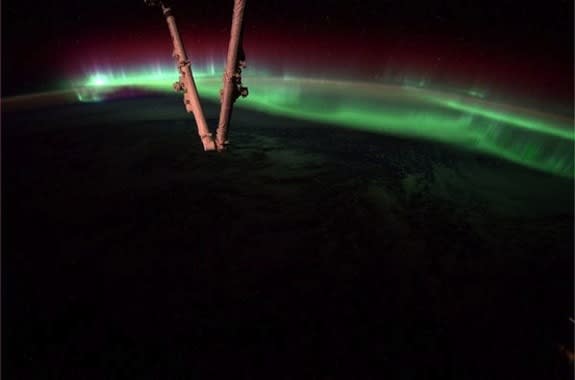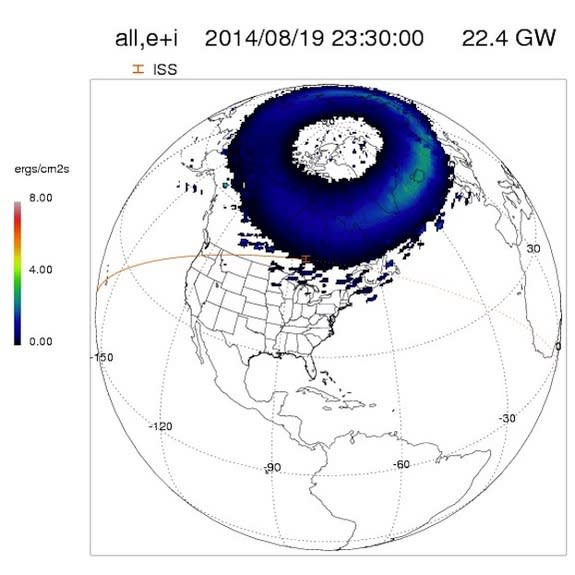Spectacular Auroras Captivate Astronaut in Space (Photos)
The northern lights illuminated the night sky near the Arctic Circle earlier this week in a stunning display that could even be appreciated by astronauts living on the International Space Station.
"Never in my wildest dreams did I imagine this," NASA astronaut Reid Wiseman wrote in a Twitter post Tuesday evening (Aug. 19) alongside a photo of the amazing green auroras.
Wiseman — who is a flight engineer, and perhaps Expedition 40's most prolific shutterbug — took pictures of the spectacle as the space station flew past North America around 7:30 p.m. EDT.
Unbelievable. pic.twitter.com/NOgRQgwFqY
— Reid Wiseman (@astro_reid) August 19, 2014
The auroras started glowing just hours after Earth's magnetic field was bombarded with a giant cloud of gas known as a coronal mass ejection, or CME, which erupted from the sun on Aug. 15. The collision kicked off a geomagnetic storm responsible for the northern lights, or aurora borealis.
As a statement from NASA explains, the magnetic fields surrounding Earth compress and release like a spring during a geomagnetic storm. This type of disturbance can trigger reactions that excite ions of oxygen and nitrogen in the upper atmosphere, producing electrifying bands of color in the night sky.
The same phenomenon occurs in the Southern Hemisphere, too, where it is known as the aurora australis, or southern lights. Auroras can even occur on other planets. The Hubble Space Telescope has taken pictures of swirling auroral displays of UV light in the upper atmosphere over Jupiter's north pole.
NASA models show that auroras indeed would have been visible in parts of Canada as Wiseman flew overhead Aug. 19. Photos on Spaceweather.com show that skywatchers from northern climes in Lithuania, Sweden, Michigan and Canada also had a good view of auroras from the ground.
Though the CME that occurred Aug. 15 sparked intense auroras, its impact was otherwise quite weak, according to Spaceweather.com. When aimed directly at earth, strong CMEs could potentially cause radio and power blackouts as well as disrupt GPS systems and satellites.
Follow Megan Gannon on Twitter and Google+. Follow us @SPACEdotcom, Facebook or Google+. Originally published on Space.com.
Copyright 2014 SPACE.com, a TechMediaNetwork company. All rights reserved. This material may not be published, broadcast, rewritten or redistributed.


